
CHAPTER IX
Uniforms, Insignia, and Individual Equipment
Section I. ARMY UNIFORMS
1. General
a. PREWAR DEVELOPMENTS.
In peacetime the German Army provided its personnel with both a service and a field uniform.
The service uniform is an extremely gaudy form of dress. Its purpose was to promote enlistments,
and to induce soldiers to vie for the various embellishments awarded for skills, service,
and rank. The field uniform was designed to retain these advantages as far as possible,
while at the same time providing a practical field uniform. Its designers bore in mind
considerations of comfort (fit, warmth in cold weather, coolness in hot weather, body
ventilation), utility (adequate pockets, and support for individual equipment, arms,
grenades, and ammunition), and security (relative inconspicuousness in different
seasons and in different types of terrain). Because of anticipated strategic and
production conditions, economic factors had great influence on the field uniform.
In particular, the necessity of stockpiling wool and cotton against probable wartime
shortages caused the Germans to mix about 30 per cent of rayon with the wool of
the uniform cloth. So carefully was this material prepared that the resultant uniforms
suffered little actual loss of thermal efficiency and wearing quality.
Armored and mountain troops were provided with special uniforms, while special clothing
items were furnished personnel engaged in various other special tasks or on duty
in unusual weather conditions. Nevertheless, prior to 1939, there was a
remarkable degree of standardization in German Army uniforms, and an equally
remarkable emphasis upon retention of traditional features and appurtenances
designed to improve individual morale and to cultivate arm and unit esprit de corps.
b. WARTIME DEVELOPMENTS.
The prolongation
of the war into 1942 resulted in a need for simplification of the field uniform,
and in the use of a
poorer quality cloth. By the winter of 1943-44, the average wool content of the
field uniform cloth had sunk to approximately 50 per cent, with some uniforms
dropping as low as 40 per cent. The wool itself was of low quality because it
had been re-worked. These recent field uniforms present a shoddy appearance even
when new; they also have very poor thermal insulation, and when wet lack
strength. The press of economic conditions resulted in the introduction on 25
September 1944 of an entirely new field uniform--the Model 1944. This uniform
will replace that designed in 1936 as stocks of the latter are exhausted. The
new field uniform is designed to conserve resources and to permit production by
relatively unskilled labor.
As the quality of
the uniform has decreased, the German High Command has sought to bolster morale
by exploiting to the utmost the esteem-building effect inherent in badges,
awards, decorations, and arm bands, as well as marks of special units, rank, and
specialty. German troops have prized these various symbols so highly that they
usually wear them on the field of battle, even though personal security is
compromised by nullification of protective coloration, by permitting the
singling out of key or expert personnel by enemy observers and snipers, or by
facilitating the operations of Allied intelligence. Indeed, such has been the
disregard for security on the part of noncommissioned officers and men that they
have worn silver instead of dull gray insignia whenever the former has been procurable.
Further recent
developments include the provision of additional special uniforms required by
the development of specialized troops and the necessity of campaigning under
unforeseen conditions of extreme heat and cold. The service uniform has been
confined to officers already owning them, officer candidate battalions, higher
staffs in the rear, permanent parties of service schools, and similar personnel.
[IX-1]
2. Service Uniform
a. GENERAL. Whereas many
armies have both dress and service uniforms, in the German Army the service coat
(Waffenrock) and trousers serve as the basis for the
following varieties of dress:
(1) Gesellschaftanzug.
This is the dress
uniform, which in turn is divided into grossen
(ceremonial) and kleine (ordinary) Gesellschaftanzug. Long trousers and high black shoes
always are worn with this type of uniform. Officers may wear white jackets
during appropriate seasons.
(2) Ausgehanzug.
This is a type of
uniform which might be termed "walking-out dress". In the peacetime Army, it was
a most important uniform, since it gave noncommissioned officers and enlisted
men an opportunity to display themselves while on pass. It includes service cap,
service coat, long piped trousers, high black shoes, and black belt with saber
(for senior noncommissioned officers) or decorative bayonet (for junior
noncommissioned officers and men) . Decorations and awards may be worn, together
with a colored tassel on the sword or bayonet. For officers and senior
noncommissioned officers, this tassel indicates rank; for others, it indicates
by its color the wearer's unit within the regiment.
(3) Meldeanzug.
This uniform, much like "walking-out dress", is worn on minor occasions.
(4) Dienstanzug.
This is the
service dress proper, worn when attending classes, on duty in an office, or
performing other duties not calling for the field uniform.
(5) Paradeanzug.
This uniform is
similar to "walking-out dress", but resembles the field uniform in that steel
helmet, boots, and (for enlisted men) cartridge pouches are worn.
b. SERVICE COAT. The service coat
(Plate I),
which forms the basis for all these uniforms, is highly decorative.
The same basic formfitting coatis used for all
ranks. The base color is the warm, field green known to the Germans as "field
gray" (feldgrau) . Collar and cuffs are covered with
a dark bluish-green imitation velvet, which also appears as the base for any
sleeve insignia that may be worn. The front edge of the eight-button coat
opening, the lower edge of the collar, and the upper part of the cuffs are piped
in the color of the wearer's arm. Fancy silver patches with buttons are worn on
the cuffs. These patches, together with the collar patches, are each mounted on
a velvet base dyed in the color of arm. Noncommissioned officers wear silver
braid on the upper edge of collar and cuffs, and around the shoulder straps.
They therefore present an even gaudier appearance than commissioned officers.
Officers and noncommissioned officers of the Reichswehr
may wear Reichswehr coats with proper insignia
as service dress (Plate II).
These coats also are worn sometimes in the field.
Though service coats are of wool, officers may have cotton ones privately
tailored for summer wear.

Figure 1.--Army national emblem,
worn on the right breast of the field and service coat and on the front of caps.
The eagle is silver or gray, on a dark green background. The background is black
for the black uniform. Navy personnel wear a similar gold eagle.
c. SERVICE TROUSERS. The service
trousers or breeches made of bluish-gray wool cloth, are piped along the sides
in the color of arm. On both sides of this piping General Staff and general
officers add a broad stripe in the proper color. Officers may wear service
breeches in the field.
d. SERVICE CAP. The service cap
is similar to the U. S. Army service cap, but is upswept to give the wearer the
appearance of height. The visor is black, with a silvercorded chin strap for
officers, and a black leather strap for noncommissioned officers and men. The
cap band is of dark, bluish-green imitation velvet (blue-gray for Sonderfuhrer),
piped top and bottom in the color of
arms. Piping also appears around the crown of the cap. The cap cover is
field-gray. The national emblem (an eagle, stylized differently for the
different Armed Forces and Party organizations), and below it the national
colors (black, white, and red) surrounded by oak leaves, are worn on the cap
front. Officers often wear service caps in the field.
3. Field Uniform
Since anticipated
economic conditions precluded the provision of both service and field uniforms
for all German Army personnel, the German Army field uniform was designed to
perform the dual purpose of field and service uniform. It therefore retains as
many of the morale-raising features of the service uniform as possible. In
[IX-2]
wartime, the
field uniform is worn in combat and on all occasions except those that call for
a fatigue or work uniform. As the war has progressed, the number of
embellishments worn on the field uniform has tended to increase, except where
economic conditions have interfered. The field uniform includes the following
components (some of which have undergone changes during the war as noted):
a. HEADGEAR.
(1) Steel helmet.
The present steel
helmet, M1935, is used by all branches of the German Armed forces, although some
World War I helmets as well as Czech and Italian helmets still are in use. The
M1935 is a smaller and lighter version of the World War I German helmet, from
which it can be differentiated by the absence of facepiece lugs which
characterized the old helmet. It comes in five basic sizes, which weigh from 1.8
to 2.7 pounds. Two ventilation holes are furnished at the sides. The suspension
consists of an adjustable, leather-padded, spring-aluminum band, secured at the
sides and rear of the helmet by three cotter keys. The chin strap is leather.
Prior to the war, the national colors were worn on the right side of the helmet
and the national emblem on the left side. These emblems are no longer worn.
(2) Old-style field cap.
The old-style field cap (Plate I)
is of field-gray wool-rayon cloth. It is cut similarly to
the U. S. WAC garrison (oversea) cap, except that the turn-up is scalloped
downward in front. This scallop is provided so that the eyes are left uncovered
when the turnup is lowered to protect the neck and ears. The front of the cap is
decorated with the national emblem and the national colors. An inverted "V" in
the color of arm at one time enclosed the national colors. Officers wear silver
braid around the top of the crown and along the edge of the scallop (Plate II).
The cap is designed to be worn under the steel helmet.
(3) M1942 field cap.
The M1942 cap is an early type of field cap, tried out in 1936, and reissued in 1942 as a new
type. It resembles the old-style field cap, except that the turn-up is buttoned
in front (Plate III).
The turn-up flaps may be buttoned across the chin.
(4) M1943 field cap (Einheitsmütze).
In 1943 a visored
wool-rayon cap was introduced (Plate II)
for all types of troops. Like the
mountain cap and M1942 field cap, the turn-up
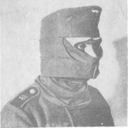
Figure 2.--Field Cap M1942.
The mountain cap and the Field Cap M1943 may be worn with the turn-down buttoned across the chin.
The toque is shown worn under the cap.
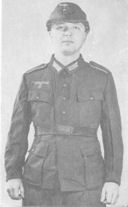
Figure 3.--Believed to be the M1944 Field Uniform coat.
The material incorporates a large amount of rayon.
[IX-3]
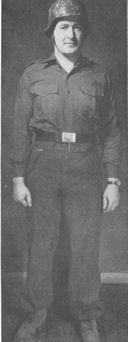
Figure 4.--Latest type of field uniform trousers with built-in cloth belt, known as Rundbundhosen.
The belt buckle shown is that of the Waffen-SS.
may be used to protect the ears
and back of the neck, with the buttoned flaps securing across the chin. The
turn-up feature is unhandy and
ineffective, even if the winter wool toque is worn underneath the cap. National
emblem and colors are worn as on the other types of cap.
(5) Toque.
A wool-rayon knit
toque is issued to protect the head and neck in cold weather. It may be worn
under the cap or helmet (Figure 2). This toque is
not a balaclava helmet, but consists of an unshaped sleeve with neck and face
openings.
b. BODY CLOTHING.
(1) Coat.
The coat (Feldbluse) has appeared in several models.
(a) Prewar coat.
The prewar coat
was designed to be as handsome as possible, while at the same time providing a
comfortable, practical, field coat affording maximum security and utility. Four
pleated patch pockets are provided, with an inner pocket along the lower part of
the right front flap for the first-aid kit. The gray-painted, stamped metal
buttons are quickly removable, and are standard for all Armed Force uniforms.
The sleeve ends are split so that they may be buttoned fairly snugly around the
wrist. The collar is built like the collar of a U. S. shirt, except that it is
stiff and is worn without a tie. Until 1943 the coat collar was protected by a
sweat band (Kragenbinde) which buttoned to the
inside of the collar. The coat collar was designed to be worn closed, although
the collar hooks and top coat button might be freed in the field. Support for
personal equipment is furnished by two adjustable metal belt holders in both
front and rear. These coats were furnished with dark, bluish-green, imitation
velvet collars and shoulder straps. Similar material was used as a backing for
the national emblem worn on the right breast (often mistaken for an aviator's
wings), and for chevrons and specialty badges.
Officers' prewar
field coats are similar to those for noncommissioned officers and men, except
that cuffs are worn. Officers, however, may wear the issue coat with proper
insignia. General officers wear gold buttons and a gold national emblem.
Chaplains' coats always have been distinguished by lack of shoulder straps.
Since officers purchase their uniforms privately, some officers have acquired
cotton field uniforms of field-gray color for summer wear.
(b) Wartime changes.
As mentioned
above, material shortages and production difficulties resulted in a lowering of
the quality of the coat material. Besides the shoddy appearance of the newer
coat, the most noticeable differences are the
[IX-4]

Figure 5.--Field gray uniform for crews of self-propelled guns.
These units now wear death's head collar patches.
absence since
mid-1943 of pocket pleats, and the use of straight-edge instead of pointed
pocket flaps. The color of the cloth also tends towards a gray rather than a
warm green. (Compare in Plate I
the private in field uniform, who wears the
prewar coat, with the first sergeant in mountain uniform, who wears the later
type of coat.) Necessity finally has compelled adoption of the Model 1944 coat
(see Figure 3), the main apparent differences of
which are tailoring modifications permitting the use of less skilled labor and
the conservation of materials.
(2) Trousers.
(a) Prewar trousers.
Until 1943, full
trousers of the same field-gray material as the field uniform coat were issued
to the German Army. Suspenders are used with this type of trousers which have
two sets of suspender buttons sewn in place. Many of these trousers have
reinforcements in the seat. Many have semi-breeches legs, so that the leg ends
easily may be fitted into the marching boot. Two slanting buttoned front
pockets, a buttoned hip pocket, and a watch pocket with ring are provided. The
trousers may be tightened at the waist by means of two tapes and a metal buckle
in the rear.
(b) Belted trousers (Rundbundhosen).
In 1943 the German Army was issued field uniform
trousers with built-in cloth belt after the style of Afrika Korps clothing.
The decision to drop suspender
trousers was governed by two considerations: the impracticability of suspenders
when only shirt and trousers are worn, and the inconvenient and, under combat
conditions, dangerous necessity of removing the coat and battle equipment to let
down the trousers. These trousers are still cut high. Like ski or mountain
trousers, the legs are tapered to fit into leggings or shoe-tops.
(3) Overcoat.
The double-breasted six-button, wool-rayon overcoat is standard for all ranks,
except that general officers wear gold buttons and have red lapel facings (and
administrative officials in general-officer grades wear dark green facings).
Collars, once of dark, bluish-green imitation velvet, now tend to be plain
field-gray wool. The coat, which is cut narrow at the waist, flares at the
bottom, and has two side slash pockets. The ordinary leather belt may be worn,
run through slits on the side so that it runs inside the rear of the overcoat
without interfering with the cloth belt at the back. Overcoats have degenerated
in quality of material in the same manner as the field coats.
[IX-5]
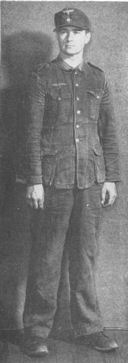
Figure 6.--Cotton- or linen-twill fatigue and work uniform in the cut of the field uniform coat.
(4) Sweater. A light-weight
wool-rayon, V-neck sweater always has been furnished as part of the field
uniform. It is worn under the coat. A green band around the neck distinguishes
Army sweaters; Air Force sweaters have a gray-blue band.
(5) Gloves.
A pair of field-gray knit wool-rayon gloves is furnished in the winter with the field uniform.
(6) Underwear.
(a) Prewar type.
The type of Army
underwear issued until 1943 consists of a long-sleeved undershirt and long
underdrawers, worn in all seasons. They are made of medium-weight, tricot
(machine-knit) cotton cloth, which gradually has incorporated increasing amounts
of rayon. Since the war began, an increasing proportion of Army underwear has
been dyed green for camouflage.
(b) 1943 shirt.
In 1943 the
collarless undershirt was replaced by a green tricot combination
shirt-undershirt with collar and two buttoned breast pockets. The shirt remains
a pullover type. The collar obviates the need for a sweatband inside the coat
collar. When worn with the coat collar closed, the shirt shows slightly above
the edge of the coat collar. When the coat is worn with the collar hooks and top
button open, the shirt collar is worn outside the coat collar (see the 1st
sergeant in mountain uniform, Plate I).
The provision of a fairly presentable
shirt-undershirt makes possible a coatless summer uniform.
c. FOOTGEAR.
(1) Footwraps and socks.
The German
soldier is furnished with long, wool-rayon socks and with footwraps. The latter
are of the best quality wool or of cotton flannel, cut in large squares. One
square is wrapped around each foot over the socks before the shoe or boot is put
on. Boots are fitted to two pair of socks, or one pair of socks and one pair of footwraps.
(2) Jack boots (Marschstiefel).
Short boots have
been the traditional footgear of German soldiers for centuries. This type of
footgear, however, both requires an inordinate amount of leather and causes
unnecessary wear on the heel during the march. The traditional marching jack
boot therefore has received much adverse criticism in the German military press.
By 1941 its use was limited to infantry, engineers, and motorcyclists. Issue
finally has been completely suspended, although existing stocks will be used up.
(3) Anklet leggings.
Short leggings
worn with high shoes now replace the jack boot. The leggings are of cotton or
linen duck, with the lower edge rimmed
with leather. Each legging is secured on the outside with two leather straps
with metal buckles.
[IX-6]
(4) High shoes (Schnürschuh). High laced
leather service shoes have always been part of the field uniform issued by the
German Army. They now replace the boot entirely, instead of serving as alternate footgear.
d. FATIGUE OR WORK CLOTHING.
Prior to the war
and during its first 2 years, individuals might be issued both a work suit and a
fatigue suit with the field uniform. Generally only one was issued each man, the
work suit being reserved for those with heavy tasks, such as motor maintenance.
Both are cut in the same style, but the work suit is of unbleached linen woven
as herringbone twill, while the fatigue suit is of a lighter linen herringbone
twill dyed a rush green (Plate II). In 1943 a fatigue coat, cut in the style of
the field uniform coat, was issued. This latter type, often of a cloth
containing a high percentage of rayon, may serve as a summer uniform.
e. ISSUE. The field uniform
as described above is issued to all troops except those requiring special
uniforms or special clothing issue because of unusual tasks or because they are
expected to operate under abnormal terrain or weather conditions.
4. Special Uniforms and Clothing
Special clothing
issued to German Army troops varies from minor changes or additions to the field
uniforms, to uniforms of completely different cut, color, and material.
a. BLACK UNIFORM.
Prior to the war,
a black uniform was furnished crews of German Army tanks and armored cars. This
uniform, which has undergone slight changes, now is worn by crews of
"Elephants", by tank-destroyer and assault-gun crews in Panzer and Panzer Grenadier
divisions, and by tank and armored-car crews.
(1) Headgear.
(a) Beret.
Until the winter
of 1939-40, troops wearing the black uniform wore a black beret, which served as
a crash helmet. This helmet type of headgear proved unnecessary.
(b) Black field cap.
During the winter
of 1939-40, a black, wool-rayon field cap, in the style of the old-style Army
field cap, replaced the black beret.
(c) 1934 black field cap (Einheitsmütze).
Simultaneously with the introduction of the field-gray Einheitsmütze
for the normal field uniform, the black uniform received a similar visored
cap in black cloth. Insignia and
braid for officers follow the field-gray cap pattern.
(2) Body clothing.
(a) Coat.
The black, double-breasted, wool-rayon coat issued with the black uniform is known as the
"field jacket" (Feldjacke). It is illustrated in
Plate II.
Recent jackets lack the piping on the edge of the collar, and some may
have large pockets on the left breast. The coat is made of the same quality of
wool-rayon cloth as the field uniform. It is dyed black to conceal dirt and
grease stains. A metal death's head is worn on each collar patch.
(b) Trousers.
The black, wool-rayon trousers of the black uniform are referred to as "Field trousers"
(Feldhosen). They resemble the later type of normal
field uniform trousers in cut, with ski-pant legs. They are fitted with tapes,
however, so that they may be bound to the leg at the ankle.
(c) Underwear.
Underwear consists of long drawers and a collared tricot shirt-undershirt with black
necktie. Until 1944, this shirt was gray. Issue since that date has been green,
and therefore identical with underwear for the normal field uniform.
(d) Two-piece coverall.
For camouflage
purposes, for a summer uniform, and for a work garment a two-piece coverall of
rush-green cotton or rayon is issued. It is cut identically with the black wool uniform.
(3) Footgear.
Standard black
service shoes, long socks, and footwraps are worn. The use of boots with the
black uniform is contrary to German regulations.
b. FIELD-GRAY UNIFORM FOR ARMORED-VEHICLE CREWS.
A wool-rayon
field-gray uniform, identical in cut with the black uniform, was issued in the
spring of 1940 to crews of assault guns. This uniform is worn by the crews of
the assault guns and tank destroyers of infantry, light infantry, and mountain
infantry divisions. The uniforms bear a death's head on each collar patch. Crews
of armored trains and of self-propelled infantry and antiaircraft guns wear the
same uniform with the usual field uniform collar patches (Plate II). A
two-piece, rush-green coverall, identical with that issued to troops wearing the
black uniform, also is issued to those wearing the field-gray uniform for
armored-vehicle crews.
c. MOUNTAIN UNIFORM.
The mountain
uniform is similar to the normal field uniform with the following exceptions:
[IX-7]
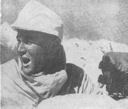
Figure 7.--White cap cover for the mountain cap.
(1) Cap.
The visored mountain cap, derived from the visored Austrian cap of the last war, is the
original model for the M1943 Einheitsmütze. The
mountain cap may be distinguished by a metal Edelweiss
sewn to the left side of the cap (Plate I). A white camouflage cap cover is
furnished with the cap.
(2) Coat and overcoat.
Field uniform coats and overcoats are worn, but are embellished by an Edelweiss on the
upper right sleeve (Plate I).
(3) Windjacket.
The mountain
windjacket is a light, double-breasted, long jacket of olive-colored, windproof,
water-repellent duck (Plate II). This is less common now than the parka, which
appears to be superseding it.
(4) Sweater.
The mountain
sweater, heavier than the normal field uniform sweater, has a turtle neck for added warmth.
(5) Trousers.
Baggy trousers,
designed and fitted so as not to bind the mountaineer at any point, are provided
German mountain troops. These trousers are of the usual field-gray, wool-rayon
cloth. Their ski-pant bottoms tie with tapes at the ankles. Special mountain
suspenders are issued with these trousers.
(6) Parka and over pants.
Until 1942, a
white parka was issued on the basis of 10 per cent of unit strength. By the time
of the Caucasus campaign, a new and improved type of parka, with overpants of
the same material, was furnished to mountain divisions. The parka is reversible,
with a tan and a white side, and is distinguished by three buttoned breast
pockets. The cloth is unusual in that the rayon fibers are designed so that some
provide strength, while others
swell when wet. The swelling action renders the garment water-repellent to a
high degree. When dry, the fiber shrinks, permitting proper ventilation through
the garment. The objective of the designers was to avoid the accumulation of
sweat, which, if the wearer should rest after heavy exertion, would cause undue
dampness and cooling and result in colds, pneumonia, and frostbite.
(7) Canvas overmittens.
These mittens
with leather palms are furnished in addition to the field uniform wool gloves to
provide extra insulation against cold and to keep the wool gloves dry.
(8) Ski-mountain boots.
Heavily-hobnailed, high laced shoes are provided as ski-mountain boots.
(9) Leggings.
Until October
1944, short, wrap leggings of field-gray wool, such as those used by Austrian
mountain troops in World War I, were standard for German mountaineers. Now these
are being replaced by the canvas leggings issued with the normal field uniform.
(10) Rock-climbing shoes.
High climbing shoes with rope or felt soles are issued when necessary.
(11) Camouflage clothing.
Prior to 1941,
white parkas or white suits were issued to mountain troops for operations in
snow-covered regions. The present mountain parka and windproof trousers have a
tan and a white side.
d. SPECIAL CLOTHING FOR MOTORCYCLISTS.
Motorcyclists receive as supplementary clothing a raincoat; a pair of goggles; a pair of
gauntlets; and, in winter, an extra sweater, wool oversocks, and a special coat.
The gauntlets are of overcoat cloth with trigger finger, and may have leather
palms. The footless oversocks come up high on the leg. The raincoat is a
special, long, rubber coat, designed to be buttoned in a variety of ways to
improve protection and to facilitate operation of the motorcycle (see motor
vehicle coat in the color plates). This rubber coat also may be worn by drivers
of light vehicles. In winter, a surcoat may be furnished--a heavy wool garment
cut like the overcoat, but sufficiently large to be worn over all clothing
including the overcoat. Recent surcoats have wool hoods.
e. SPECIAL CLOTHING FOR DRIVERS.
Drivers of all
types of vehicles receive motorcyclists' gauntlets, and for cold weather the
surcoat. Drivers of horse transport also receive felt over-boots with wooden soles.
[IX-8]
f. SUMMER UNIFORM.
Prior to 1941, no
uniform for field summer wear was issued. Since that date, uniforms developed
for the Afrika Korps have been made available to
troops operating in arid and tropical climates, such as prevail in Italy,
Greece, the Crimea, and the Kuban delta. Mention already has been made of the
adaptation of the normal field uniform and normal fatigues as a summer uniform.
The summer field uniform proper includes the following items:
(1) Headgear.
The first Afrika Korps troops were provided with tropical helmets
and khaki cotton field caps in the cut of the old-style field uniform cap. These
soon were replaced by a visored khaki cotton field cap copied from the mountain cap.
(2) Body clothing.
Body clothing
consists of loose-mesh rayon or cotton undershorts and short-sleeved undershirt;
a two-pocket, grayish-green or khaki cotton shirt carrying shoulder-strap
insignia; and khaki shorts or long trousers with built-in cloth belts. Though
shirtsleeves may be the uniform of the day, a roll-collar, V-necked, khaki coat
is furnished. In spite of cotton shortages, the coat and trousers continue to be
of good quality cotton twill. Since late 1942, however, the four pleated pockets
of the coat have been modified in the same fashion as those of the normal field
uniform coat. The cotton twill breeches furnished in the very early days of the
Afrika Korps are worn only by those still possessing them.
(3) Footgear.
Desert boots with
cloth tops are no longer necessary, but still may be encountered. High brown
leather shoes are now the standard wear. Wool socks, rather than foot-wraps, are worn.
g. WINTER UNIFORMS.
(1) Pre-1941 winter clothing.
Prior to the
winter of 1941-42, the German Army made little provision for winter warfare.
Mountain troops were the best equipped to fight under conditions of extreme cold
and snow; the remainder of the Army received special clothing only for special
missions and duties, as noted above. Sentries were the only soldiers, besides
drivers and motorcyclists, who received specially designed clothing. To them
were issued surcoats and felt overboots, or, if the latter were lacking, straw
overboots. Ordinary troops wore the wool toque, gloves, sweater, and overcoat in winter.
(2) Post-1941 winter clothing.
As soon as the
necessity for great quantities of winter clothing became obvious, the German Army attempted numerous
improvisations based on many varieties of civilian, military, and captured clothing. Even
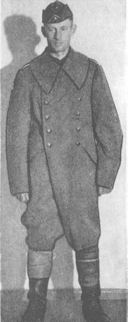
Figure 8.--Improvised winter clothing.
The ordinary overcoat has been wrapped around the legs
and the lower part of the coat bound with strips of cloth secured by cords.
[IX-9]
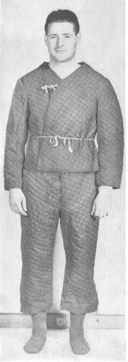
Figure 9.--Padded coat and trousers worn under the new winter uniform.

Figure 10.--The toque.
Two toques are shown, one colored white to show the manner of wearing two in extreme cold.
though a standard
winter uniform was developed in 1942 and issued for the winter of 1942-43,
stocks have been inadequate. The necessity of providing heavy winter clothing
for other than combat troops has required continued improvisations. These
include rabbit-fur jackets and vests, as well as sleeveless and sleeved pile
jackets of rayon known as "breastwarmers". Soviet pile caps and felt boots often
are used. For sentries and others who are compelled to remain fairly motionless
in the cold, overcoats and surcoats with extra linings are available. Heavy
sheepskin surcoats, originated by the German Air Force, also may be used.
However, a most important development is the new winter uniform.
(3) New winter uniform.
The new winter
uniform is designed to provide a comfortable combat uniform giving freedom of
movement and use of equipment, yet offering protection against extreme cold and
overheating during periods of exertion. The uniform is worn over the normal
field uniform. Cartridge pouches are worn on the normal leather belt, under the
skirt of the parka. This feature aids in providing essential body ventilation to
prevent the accumulation of sweat. Several clips of ammunition are kept
available in the parka pocket. The hooded parka has a waist belt, bottom
drawstring, and double-buttoned flaps up the front that provide a windproof
[IX-10]
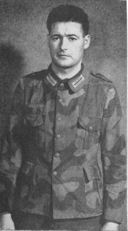
Figure 11.--Improvised camouflage coat in the cut of the Army field uniform coat.
The cloth is taken from shelter duck material of an Italian shelter half.
closure. A toque
is worn under the steel helmet, and when the wind is strong, a stiff, felt face
mask may be fitted. The trousers have two side pockets, and fairly short legs.
These legs fit over special, white, rayon-canvas boots which have fabric soles
and three-layer walls. The latter may be stuffed with straw or paper as added
protection against cold and moisture. Since these boots are not suited for mud
conditions, ski-mountain boots or felt boots with leather soles and facings may
be used instead. The parka, toque, and trousers are issued in three weights. The
most common is the medium weight, in which the material consists of two layers
of windproof cloth with a rayon-wool interliner.
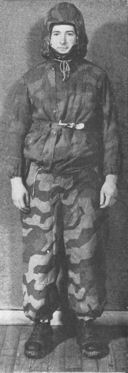
Figure 12.--New winter uniform with mottled side out.
[IX-11]
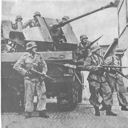
Figure 13.--Flak personnel in summer uniform.
The windproof cloth has the same water-repellent features as the latest mountain
parka. Since the complete uniform contains only 9 per cent wool, the clothing is
heavy for its warmth, and therefore not as efficient as the Germans had planned.
The uniform originally had a white and a field-gray side, but by 1943 the need
for better camouflage had become so apparent that a mottled design was
substituted for the field-gray. Two designs of mottle are used-- one is that of
the normal shelter half, and the other is that of the Army camouflage jacket
(Plate II). Both types are in use. To facilitate recognition, cloth bands in the
color of the day may be buttoned to the sleeves of the parka.
h. CAMOUFLAGE CLOTHING.
The original
prewar issue of a camouflage shelter half proved insufficient for the camouflage
of individuals. After considerable improvisation on the part of field units,
particularly in Italy, a standard Army light-rayon camouflage jacket (Plate II)
was issued and put into use in 1943-44. Various types of field-made jackets,
using German and Italian shelter halves, are widely employed. Snipers may wear
complete camouflage suits, including face masks. Headgear camouflage often
[IX-12]
is improvised, since the Army did not provide a
standard camouflage helmet cover until the issue of the camouflage jacket. But a
very practical elastic band to fasten camouflage materials to the helmet was
furnished to all troops. Camouflage clothing is usually organizational, and is
issued to snipers, personnel of outposts, and like troops.
Section II. GERMAN ARMY INSIGNIA
1. General
German Army
insignia are intended to establish clear differentiation between ranks and types
of service, and at the same time to encourage individual combat efficiency and
proficiency in military arts. Direct appeal is made to vanity and to the human
tendency to show off military prowess as expressed in terms of insignia and
decorations. Many of these insignia are based on traditional German military
insignia selected from units famous in German popular and military history.
2. Insignia of Rank
Insignia of rank
mainly are determined by shoulder-strap devices
(Plate IV and
V). While there
are many minor complexities having to do with fine differentiation among various
ranks, services, and functions, these do not concern the average case. A clear
distinction is made among commissioned officers (Offiziere),
noncommissioned officers (Unteroffiziere), and enlisted men of various
grades (Mannschaften). Because of the importance of
noncommissioned officers in combat and on the drill field, they are accorded
special distinguishing marks beyond the normal insignia of rank. Along the lower
edge of their coat collar they have a silver or gray braid .4 inch wide. First
sergeants, as senior company or battery noncommissioned officers, wear two bands
of similar braid on each coatsleeve. Distinction is made between the upper three
and the lower two grades of noncommissioned officers. The former are known as
Portepeeunteroffiziere; the latter as Unteroffiziere ohne Portepee.
The former are entitled
to special considerations and privileges, as are the first three grades of U. S.
Army noncommissioned officers. These include wearing on certain occasions an
officer's saber
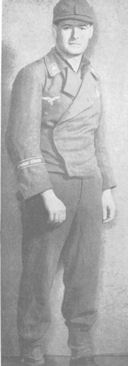
Figure 14.--Tank destroyer uniform of the Hermann Goering Division
(shoulder insignia of rank is missing on the uniform shown).
[IX-13]
and a tassel known as the
Portepee, hence the title. Fatigue clothing carries
the type of noncommissioned-officer insignia used on Reichswehr uniforms.
3. Insignia of Arm and Specialty
In order to
clarify an individual's duties, to afford easy recognition of line troops, and
to avoid jealousy arising from rapid promotion of qualified specialists, the
German Army has made a somewhat ill-organized effort to distinguish line
personnel of the arms; personnel of special and administrative services, and
personnel of both preceding categories who are so proficient or qualified that
rapid promotion to suitable rank is necessary. The first group wear insignia of
the line arms (normal insignia of rank and of arm); the specialists and
administrative officials tend to be designated by varied insignia (usually by
introducing a basic dark-green color); the third group (Sonderfuhrer) wear modifications of normal insignia. Sonderfuhrer insignia for line duty is shown in color
plates; insignia for Sonderfuhrer of the Corps of
Administrative Officials is somewhat similar as regards the collar patch, but
the shoulder strap is more difficult to differentiate. In peacetime and during
the early part of the war, further differentiation was made to indicate reserve
officers, Landwehr officers, officers recalled to
active duty, and officers over the retirement age who might be required from
time to time for consultation.
4. Fourrageres
All German
officers are entitled to wear the fourragere shown on the officer's service
dress in Plate II.
Adjutants wear a single cord. The adjutant's fourragere must
not be mistaken for one of the 12 grades of marksmanship awards
(Plate VII), and
1st sergeant in service dress (Plate I).
The marksmanship awards sometimes are worn in combat.
5. Use of Numbers and Letters on Shoulder Insignia of Rank
Although the
wearing of numbers and letters furnishing unit identification is forbidden in
forward areas, German soldiers do not always observe this regulation. Soldiers
of the Field Army, however, usually wear such identification in the form of
slip-over cloth strips, with the numbers running across the shoulder strap with
the length of the strip. In rear areas, numbers are worn as shown in
Plates IV
and V.
Arabic numerals
indicate the number of the regiment or battalion to which the wearer belongs.
Enlisted men and the lower two grades of noncommissioned officers wear numbers
in the color of their arm; other noncommissioned officers wear silver numbers,
as do officer candidates. Officers wear gold numbers. Letters may be combined
with Arabic numerals. In some cases
(See Plate VI), these indicate units of
special arms or of special branches of arms. In other cases, the letter D and an
arabic numeral indicate division headquarters personnel. Since regulations have
changed frequently since 1939, the system of identification by numbers and
letters is difficult to follow without the aid of complex guides.
Section III. GERMAN AIR FORCE UNIFORMS AND INSIGNIA
1. General
Although many
items of uniforms and clothing of special Air Force design are provided, many
items are procured from the Army in suitable colors. There is not, however, the
degree of standardization in Army and Air Force clothing that would appear
desirable, particularly in view of the number of Air Force ground troops
performing the same functions as comparable Army troops. This is especially true
in regard to the uniforms provided for Africa, and now used as summer field
uniforms. Characteristic of most Air Force uniforms is the gray-blue color of
much of the uniforms and equipment. Comments made on the decline of cloth
quality in Army uniforms are equally applicable to Air Force uniforms.

Figure 15.--Air Force national emblem,
worn on the right breast of coats, overcoats, jackets, jump suits, and summer shirts.
[IX-14]
2. Uniforms
a. SERVICE AND DRESS UNIFORMS.
The German Air
Force no longer has service uniforms, except for a white summer coat and a dress
mess jacket for officers, and a service coat for generals. A service coat for
all personnel was already in the process of being replaced in 1939. This coat
(Tuchrock) resembles the present uniform coat (Waffenrock),
except that it is not designed to be
buttoned up to the neck. (Compare the private's and the colonel's coats on
Plate VIII.)
b. NORMAL FIELD UNIFORM.
(1) Headgear.
The Air Force
field cap (Fliegermütze) is a simple wool-rayon cap
similar in cut to the present U.S. WAC garrison cap. The national colors are
worn below the national emblem. Officers wear silver braid around the edge of
the turn-up. The Army Einheitsmütze, in Air Force
color and with proper insignia, has begun to replace the Fliegermütze.
The Army M1935 steel helmet, painted
gray, is issued when required.
(2) Body clothing.
(a) Coat.
The standard Air
Force coat (Waffenrock) is a five-button coat,
designed to be worn either with the collar closed at the neck, or as a
roll-collared, V-neck coat with the collar hook and top button open
(Plate VIII).
Four pleated patch pockets are furnished, with the national emblem
appearing over the right breast pocket. Two adjustable metal belt holders of
Army style are located toward the sides of the uniform. The sleeves end in large
cuffs. The collar at one time carried piping on the lower edge in the color of
the arm. Though this feature was discontinued in 1940, such coats still may be
found. Insignia of rank are worn on the shoulder and on patches located on the
ends of the collar. In 1944 this coat was issued in cotton-rayon instead of wool.
(b) "Flight blouse" (Fliegerbluse).
Air Force troops
more commonly wear a short, cuffless, fly-front, wool-rayon jacket with slash pockets
(Plate VIII).
The jacket's collar may be worn open or closed. Belt
holders, insignia, and piping (if the latter is worn) are placed as on the coat.
The jacket is intended for crews of aircraft, and therefore is designed so that
there will be no buttons, patch pockets, or cuffs to catch on projecting parts
of aircraft interiors. The jacket is sufficiently convenient and smart-looking,
however, to be popular with all Air Force troops.
(c) Trousers.
The gray-blue,
wool-rayon, Air Force trousers are similar in cut at the waist to Army suspender trousers.
Air Force trousers,
however, are always slacks, and are not fitted with narrow or ski-pant bottoms
except in the case of mountain trousers.
(d) Shirt.
Gray shirts of
mottled gray-blue thread are worn with black tie. The shirts may be fitted with
shoulder straps to indicate rank.
(e) Underwear.
Army underwear is worn.
(f) Sweater.
The Air Force
sweater is identical with the Army's, except that the colored band at the neck
is Air Force gray-blue.
(g) Overcoat.
A blue-gray
version of the Army overcoat is worn. Patches are placed on the collar. First
sergeants wear their sleeve bands (Plate VIII).
(3) Footgear.
The Air Force
uses Army-type jack boots, shoes, socks, and footwraps. Leggings, when used, are
Army leggings dyed blue-gray.
c. MOUNTAIN UNIFORM.
Normal Air Force
uniforms are combined with Army issue, properly colored when necessary, to make
up mountain clothing (Plate VIII). The Waffenrock
and mountain trousers are used, together with blue-gray, ankle-wrap
leggings: and ski-mountain boots. The Air Force mountain cap, which had but one
button securing the turn-up in front, largely has been replaced by a cap in the
style of the Army mountain cap. Army Edelweiss
badges may be worn.
d. FATIGUE AND WORK SUITS.
Flak crews and
aircraft mechanics may be furnished with a cotton-linen-rayon, herringbone
twill, black or dark blue-gray coverall with fly front
(Plate IX). Two-piece
work suits of various colors are also used
(Plate X).
e. SUMMER UNIFORMS.
Air Force issue
resembles that of the Army both in history and in the nature of the items
provided, except for slight modifications in all pieces of clothing. Peculiar to
the Air Force are bright aluminum, built-in trouser belt buckles, and the long,
baggy trousers with ankle buckles illustrated in
Plate IX. As in the case of the
Army, the tropical helmet no longer is worn except by those who still retain the
original issue. The Air Force national emblem appears on all coats and shirts.
f. PARACHUTE TROOPS UNIFORMS.
Parachute troops are issued several distinctive items. They are:
(1) Helmet.
The parachute
helmet, resembling a cut-down version of the M1935 steel helmet, is fitted with
large sponge-rubber pads and leather suspension shaped to the skull.
[IX-15]
(2) Jump suit.
The older types
of jump suit-used in 1939-40 were of the pullover, coverall variety. The present
types button up the front like coats, and have snap closures to secure the
bottom tightly around the legs--a feature borrowed from the older types. Ample
zipper-closed pockets are provided. The material is a light shelter duck,
originally olive in color ( IX),
but in present versions always mottled.
The present jump suit, like older types, is worn over the wool or summer
uniform, but can quickly be removed.
(3) Camouflage jacket.
Usually peculiar
to parachute troops (and worn by the 1st Parachute Division during the Battle of
Cassino-- hence the appellation "Green Devils") is a greenish, mottled camouflage
jacket about the length of the jump suit. This is a fly-front, cotton,
herringbone twill garment with two pockets
(Plate IX).
(4) Footgear.
Several types of
jump boots have been issued. The earlier types laced along the sides and had
heavy corrugated-rubber soles. Later types resemble the U.S. parachutist's
boot. In battle, Army-type high service shoes may be worn.
g. WINTER CLOTHING.
The Air Force
uses the Army winter uniform, and improvises in the same way as the elder
service. Often worn by Flak sentries in very exposed
positions is the very heavy sheepskin surcoat shown in color plates. This coat
may be worn by the entire gun crew, if necessary. It is, however, too heavy for
infantry combat use.
h. UNIFORMS OF THE Fallschirmjäger-Panzer Division Herman Goering.
This division
follows unusual practices in the issue of uniforms and insignia. The collar
patch is white for all ranks, while the color of the shoulder strap varies
according to type of service. Tank crews and crews of self-propelled guns wear
Army black or field-gray jackets and field trousers, but with Air Force insignia.
3. Insignia
Air Force
insignia are extremely complex. There are four systems of indicating rank: that
used on the shoulder straps and on sleeve chevrons; that used on the collar
patch; that used on flying suits; and that used on both sleeves of the motor
vehicle coat and on fatigue coveralls. The collar patches of noncommissioned
officers' overcoats, and their coat collars, are edged with silver braid in the manner of Army
noncommissioned officers' coats. The awards for combat flights (see color
plates) easily may be mistaken for pilots' insignia because of their shape. The
pilot's insignia, however, is worn as a metal or cloth badge on the lower left
breast, whereas the awards for combat flights are worn above the left breast
pocket. Not illustrated under awards in the color plates is that for night
fighters, which consists of the award for fighters with a black instead of a
silver winged arrow. Air Force personnel are awarded marksmanship badges of a
design similar to that of Army awards. Other fourrageres are worn, indicating
commissioned rank, adjutant, or merely length of service.

Figure 16.--National emblem of the Armed Party Elite Guard (Waffen-SS).
This emblem is worn on the left sleeves of coats, overcoats, and jackets,
and appears either on the front or on the left side of caps.
Section IV. ARMED ELITE GUARD UNIFORMS AND INSIGNIA
1. Uniforms
The Armed Elite
Guard (Waffen-SS) has followed the Army closely in
the provision of uniform clothing. When first sent into the field,
Waffen-SS units were distinguished in part by the type
of roll-collar V-neck coat shown in
Plate XVIII. Also distinctive were their
camouflage jacket
(Plate XVIII),
and their brown shirts with black ties. For
some time stocks of the SS coat have been practically exhausted, and Army coats
have been used. Army shirts also are issued. There remain slight differences
between the high grade shelter-duck, water-repellent, windproof SS camouflage
jacket and the similar Army jacket; the SS jacket has two slant, buttoned
pockets at its side in later versions, and a different camouflage pattern.
A new Waffen-SS uniform is a linen-cotton, herringbone twill,
two-piece suit
(Plate XIX).
[IX-16]
SS regulations
forbid wearing insignia on the collar of this uniform, but troops have shown an
increasing tendency to include all possible insignia devices. However, no
insignia are worn on the one-piece tank coverall
(Plate XVIII). In general,
Waffen-SS uniform clothing differs from that of the
Army only in respect to the above items, and in the more complete authorized
issue to Waffen-SS troops. Moreover, when complete
issue cannot be made, the Waffen-SS troops always
receive fuller issue than their Army neighbors. Waffen-SS troops now also
receive the army winter
uniform, which replaces the special SS pullover parka illustrated in
Plate XIX.
2. Insignia
Waffen-SS troops wear shoulder insignia of rank similar
to those of the Army, but wear collar patches of the General-SS.
The sleeve insignia of rank, worn on
camouflage jackets, coveralls, and similar clothing, is the same as that worn by
corresponding Army grades. The grades of snipers' badges, shown in color plates,
are issued to Waffen-SS as well as to Army
personnel. Rifle regiments of SS-Police divisions wear collar patches similar to
those worn by officers and men of the Army. The distinctive insignia of the
Waffen-SS is the national emblem worn on the upper left
sleeve. Noncommissioned officers wear silver braid along the edge of the collar
in the manner of Army noncommissioned officers.
3. Uniforms and Insignia of the Security Service of the Waffen-SS
This uniform
consists of the ordinary SS field uniform with Police shoulder straps to
indicate rank, SS collar patches, and an SD badge
(for Sicherheitsdienst) on the lower left sleeve.

Figure 17.--Waffen-SS camouflage jacket with buttoned pockets.
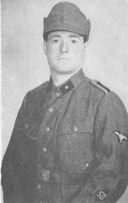
Figure 18.--Uniform of the Security Service (Sicherheitsdienst) of the Waffen-SS.
Section V. GERMAN DECORATIONS
German decorations for valor consist of the various grades of Iron Cross shown on
Plate XXII,
together with the Honor Roll Clasp. In actuality, iron crosses of the
first and second classes may be allotted in bulk to combat units, whether or not
the personnel are individually deserving of such decorations. At one time there
appeared to be some plan on the part of German authorities to keep locations of
the various types of decorations, combat service, and ordinary service, and
ordinary service awards distinct and recognizable as such even to the relatively
uninitiated. In brief, this plan seemed to be to locate campaign and ordinary
service awards above the left breast pocket in the form of ribbons, with
participation in notable campaigns indicated by badges on the sleeve. Combat and
wounds would be indicated by badges of bronze, silver, and gold located on the
left breast, while actual decorations
[IX-17]

Figure 19.--German Air Force officers wearing decorations and awards.
would be worn as ribbons in the buttonhole, at the neck, or
in the form of the easily recognizable actual metal medal pinned on the uniform.
This rule holds as a rough guide, but there are many exceptions, notable among
which are the various foreign ribbons for valor worn with other ribbons above
the left breast pocket. Marksmanship awards are worn in the form of fourrageres
across the right breast.
The German Armed
Forces place much emphasis on the morale effect of the various
decorations and awards, the
numbers of which are almost incredibly large because of the authorization of the
wearing of Nazi Party and Police badges, as well as foreign decorations and
those of minor German states under the German Empire. Much of the paper-work of
the German Army is concerned with the awarding of various types of medals and
badges and their certificates. The German troops themselves prize these honors
highly, and wear them on the field uniform even in combat.
[IX-18]
Section VI. AUXILIARY FORCES AND SEMI-MILITARY ORGANIZATIONS
1. General
There are a host
of puppet and auxiliary forces and semi-military organizations which may take
part in combat alongside the Army, Navy, and Air Force. Included among these are
the various units raised from former citizens of the Soviet Union. While many of
these troops were intended to have insignia peculiar to their organization, it
has not been possible in practice to manufacture and issue the necessary
uniforms and insignia. The insignia for these forces may be grouped into three
sets: those for the Eastern Legions (Ostlegionen),
those for the Russian and Ukrainian Armies of Liberation (with rank insignia
after the Russian style), and those for Cossack units. In practice, German Army
uniforms and insignia often are used. Military organizations with uniforms and
insignia also were formed from men recruited from the former Baltic states. A
Czech puppet Army, with its own uniforms and insignia, also exists. The Italian
Republican Army also may use German uniforms and Waffen-SS insignia, although Italian Republican
insignia may be worn on German-made uniforms. Women's uniformed auxiliary forces
include signal services for the Army, Navy, and Air Force; antiaircraft
personnel for the Air Force; and remount units for the Army. Such personnel have
uniforms, insignia, and titles of rank peculiar to their organizations. Many
uniformed Party organizations of a semi-military nature exist, as well as
Frontier (Customs) Guards, Railway Police, State Railway Personnel, the Forestry
Service, and other uniformed state organizations. Uniforms and insignia of
several of the more important auxiliary organizations serving with the armed
forces are briefly described below. These organizations usually wear an arm band
inscribed Deutsche Wehrmacht when in forward areas.
The Germans state that such arm bands indicate that the wearers are members of
the German Armed Forces.
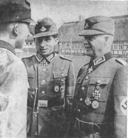
Figure 20.--Labor Service private (left), sergeant (center), and general officer (right).

Figure 21.--Uniform of an enlisted man of the German State Police.
[IX-19]
2. Volkssturm Uniforms and Insignia
The German Volkssturm has no authorized uniform or insignia except
for an armband variously stenciled Deutscher Wehrmacht
or Deutscher Volkssturm with Wehrmacht directly underneath the upper two words.
These bands may be in a variety of colors: black letters on red or white cloth,
or white letters on yellow cloth. Clothing is issued according to what is
available in the area. Volkssturm personnel are
reported to be unwilling to fight if furnished only with armbands for fear of
being arrested as franc tireurs. Efforts have
therefore been made to provide Army issue when possible. This issue is
supplemented by captured clothing: Italian, Czech, French, and so on. Uniforms
of Nazi party organizations may also be worn. It is reported that personnel with
civil and party uniforms such as street car crews, zoo keepers, postmen, SA men, etc. will have such uniforms dyed military
field gray. The only known insignia of rank is the following:
| German Rank |
English Equivalent |
Collar Patch Insignia |
| Volkssturmmann |
|
No pips |
| Gruppenfuhrer |
Squad Leader |
One pip |
| Zugfuhrer |
Platoon Leader |
Two pips horizontally |
| Waffenmeister |
Ordnance Officer |
Same as above |
| Zahlmeister |
Paymaster |
Same as above |
| Kompanieführer |
Company Commander |
Three pips diagonally |
| Ordonnanzoffizier |
Administrative Officer |
Same as above |
| Adjutant |
Adjutant |
Same as above |
| Bataillonführer |
Battalion Commander |
Four pips in square |
3. Labor Service Uniforms and Insignia
Members of the
Labor Service (Reichsarbeitsdienst, or RAD), wear uniforms with chocolate-brown collars. The
coats generally are cut in the style of the Army field uniform coat. The rank
insignia resemble and roughly follow those of the Army, although distinctive
titles are employed. A stylized spade is used for the cap badge, and appears on
the belt buckle.
4. Police Uniforms and Insignia
German State
Police uniforms may readily be differentiated from Army uniforms by proper
identification of the Police coat. This coat has four patch pockets,
the lower two being pleatless (Fig. 21). The
frontal closure is secured by eight buttons. Both collar and cuffs are brown in
color, the latter each bearing two buttons. While the collar insignia for lower
ranks resemble those of the Army, the collar patch rectangle is surrounded by a
silver cord. However, police officers of general's rank wear collar patches
(color plates), since they hold ranks in both SS and Police. Field and company
grade police officers wear shoulder straps and collar patches similar to
equivalent Army ranks, and are addressed by Army titles of rank. A national
emblem similar to the sleeve insignia for Army Military police (color plates) is
worn on the upper left sleeve, but no other national emblem is worn on the coat.
This emblem is repeated on Police caps. The back of the police coat has a
decorative double fly embellished with four buttons.
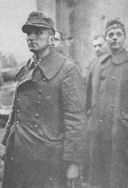
Figure 22.--Company commander of the Volkssturm.
The overcoat is the standard Army issue, worn with the field cap M1943.
The man at right wears an Italian Army overcoat.
[IX-20]
Section VII. INDIVIDUAL EQUIPMENT
1. Field Equipment
a. BELT.
The German soldier habitually wears his belt, with or without field equipment. Normally the
enlisted man wears a black leather belt, but a web belt goes with the tropical
uniform. The belt always is worn with a steel buckle bearing the branch of
service emblem. All ground forces of the Army (Heer)
have a buckle embossed with a circular crest in the center of which appears
an eagle. The circle is formed by the words "Gott mit uns" above the eagle and a
wreath below. The Air Force (Luftwaffe) buckle
carries an eagle in flight with a swastika in its claws. The figure is encircled
by a wreath. The Armed Elite Guard (Waffen SS)
buckle bears an eagle whose
outstretched wings extend across the top of the buckle. The words "Meine Ehre
heisst Treue" make a nearly complete circle below the eagle's wings. The bird
rests on another smaller circle which bears a swastika. Officers wear brown
leather belts with a simple tongue-and-bar type buckle. In the field the soldier
carries his cartridge pouches, bayonet, entrenching tool, and "bread bag"
suspended from this belt. When not wearing field equipment he wears the belt and
buckle alone. Metal hooks in the field blouse help hold the belt in place.
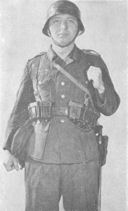
Figure 23.--Field equipment of the German infantry soldier (front view).
The cartridge pouches on the belt are partially held by leather suspenders.
The "bread bag" and canteen with cup are carried on the right hip,
and the entrenching tool and bayonet are carried on the left hip. The "bread bag" is hung on the
belt, and for demonstration purposes is shown further forward than usual.
b. CARTRIDGE POUCHES.
The usual German
cartridge pouch is made of leather. It has three separate pockets, each holding
10 rounds of rifle ammunition in two clips. The uniform belt slips through loops
on the back of the ammunition
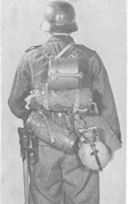
Figure 24.--Field equipment (rear view).
Messkit, shelter quarter, and a small bag (concealed under the shelter quarter)
are strapped to the combat pack.
The canteen hangs from the "bread bag."
(Mounted troops carry the canteen on the bread bag's
right-hand fittings). The upper end of the metal
gas mask carrier is suspended by a sling over the shoulder,
while the rear end is hung on the belt.
[IX-21]
pouch, which also has a ring into which the cartridge belt
suspenders may be hooked to help support the equipment worn on the belt.
Normally two pouches are worn, one on each side of the belt buckle, allowing the
rifleman to carry 60 rounds of ammunition. However, soldiers who are not
expected to use a great deal of ammunition receive only one pouch, and a leather
loop with a ring is substituted for the second pouch to hold the cartridge belt
suspenders. Other types of cartridge carriers include submachine-gun ammunition
pouches, engineer assault pack pouches, and bandoleers. The submachine-gun
pouches, now usually made of webbing, hold six clips. They are about 9 inches
long and are carried in a manner similar to the ordinary pouch. The 120-round
bandoliers, usually of camouflage pattern, are worn by paratroops slung across
the chest. They are held in place by loops slipped over the belt. Medical
soldiers receive single-pocket, leather, first-aid pouches which are somewhat
deeper and about two-thirds as wide as the ordinary cartridge pouch.
c. ENTRENCHING SHOVEL.
Although some of
the old-style German entrenching shovels, which are like the old U.S. army
shovel, still exist, most German troops are equipped with the standard folding
shovel, similar to the ssup>1/2 1/2-inch pointed steel blade hinged to an 18-inch wooden
handle. The hinge is provided with a threaded plastic nut which locks the blade
in any one of three positions: in line with the handle for use as a shovel, at
right angles to the handle for use as a pick, or folded back against the handle
for carrying. A leather case for carrying the shovel is suspended from the
cartridge belt on the left hip. Since the shovel serves as an adequate pick, few
entrenching pick-mattocks are used.
d. BAYONET FROG.
The bayonet hangs
from the cartridge belt in a leather frog just ahead of the folding entrenching
shovel or directly over the old-style entrenching shovel. A loop on the shovel
case holds the scabbard in place.
e. BREAD BAG.
The German
soldier carries the bread bag (Brotbeutel) on his
right hip, suspended from the belt. This duck bag holds toilet articles, the
field cap when not worn, a towel, and other necessities of the combat soldier.
Dismounted personnel carry the canteen snapped into the left hook on the flap of
the bread bag. It is held securely in place by slipping the strap which runs
around the canteen through the loop on the
lower part of the bread-bag flap. Mounted personnel carry the canteen on the
right side of the bread bag. Formerly a special strap was used more frequently
to allow the bread bag to be slung over the shoulder.
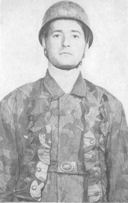
Figure 25.--Parachutists bandolier, holding 120 rounds of ammunition in rifle clips.
f. CANTEEN.
The canteen, which holds nearly one quart, has a felt cover. The canteen cup, either round or
oval, is strapped upside down over the mouth of the canteen. The first of these
German canteens were made of aluminum, but about 1942 a few were made of a
plastic impregnated wood and recent ones have been made of enameled steel.
Mountain troops receive a slightly larger canteen. Special medical canteens are
issued to medical troops.
g. GAS MASK.
The only other
item which commonly is suspended in part from the belt is the gas mask in its
metal carrier. The top of the carrier is held by a strap which runs around the
right shoulder. The bottom is hooked to the back of the belt. Paratroops receive
a special fabric
[IX-22]
gas-mask carrier to reduce the danger of injuries in landing.
2. Combat Equipment
a. CARTRIDGE-BELT SUSPENDERS.
There are a
number of different types of leather cartridge-belt suspenders issued to German
troops and webbing counterparts for use with the tropical uniform. The commonest
of these are the infantry suspenders. These are issued to combat troops of
infantry divisions who also receive the combat pack and the Model 39 haversack.
The infantry suspenders consist of straps with hooks on the front to attach to
the cartridge pouches and a single broad hook in back, which is slipped under
the cartridge belt. D-rings on the back of the shoulder straps may be used to
hold the top of the combat pack, the haversack, or other equipment. The bottom
of these suspenders are held by auxiliary straps riveted to the suspenders in
front just below the shoulders. Other common types include officers'
cartridge-belt suspenders and cavalry suspenders.
b. COMBAT PACK.
The normal
infantryman's combat pack is a webbing trapezoid with a removable bag buttoned
to the bottom. A single strap on the top half of the web frame is used to attach
the mess kit and two straps at the bottom hold the shelter quarter, tightly
rolled, over the small bag. There are hooks at all four corners so that the
combat pack may be attached to the infantry cartridge-belt suspenders. A small
pocket on the inside of the bag flap holds the rifle-cleaning kit. Normally the
tent rope, one day's iron rations, and a sweater are carried in the bag.
However, many times the rope, tent pole, and pins are carried rolled inside the
shelter quarter. If necessary a horseshoe roll of overcoat or possibly a blanket
may be attached to the combat pack by three straps, which run through the
rectangular eyelets on the top and on each side of the pack.
c. MESS KIT.
The mess kit,
formerly aluminum but now made of enameled steel, is usually carried on the
combat pack, although it is sometimes attached to the bread bag in the same way
as the canteen. Similar to the Russian and Japanese mess kit, it consists of a
kind of deep pot with a cover which may be inverted for use as a plate.
d. SHELTER QUARTER.
The German
shelter quarter serves both as a tent and as a poncho. It is highly
water-repellent duck cut in the form of an isosceles triangle about 6 feet 3 inches along the base
and 8 feet 3 inches along the other two sides. There are buttons and buttonholes
on all three edges. The shelter quarter is covered wit a camouflage mottle,
either the characteristic army camouflage pattern or the usual Waffen SS
pattern. Some have different patterns on each
side, greens predominating on one side and browns on the other. Each soldier
also is issued two tent pins and one tent-pole section for use when the shelter
quarter is made into a tent. Ordinarily four men pitch their sections together
to make a small pyramidal tent, but other combinations are possible, the most
common of which are eight- and 16-man tents. The eight-man tent is constructed
by erecting two three-sided pyramids and buttoning an inverted shelter half in
the space between them. The 16-man tent is made by joining four of the long
sides of the eight-man tent. A regular, four-section, pyramidal tent is erected
on this base. This tent stands over 9 feet high. Worn as a poncho, the shelter
quarter provides good protection from rain because of its excellent
water-repellent property. The soldier's head can be thrust through a slit with
the narrow point of the triangle in front. The two rear points are brought
forward and buttoned together. Slits are left open for the arms, around which
the poncho drapes almost as if it has sleeves. Motorcyclists can fasten the
shelter quarter around the thighs.

Figure 26.--Four shelter quarters pitched as a pyramidal tent.
These carry the Waffen-SS camouflage pattern.
3. Other Packs
a. MODEL 39 HAVERSACK.
Troops to whom
the combat pack is issued also receive the Model 39 haversack. This
square-shaped canvas pack, reinforced with leather, has no attached shoulder
[IX-23]
straps. It is attached to the infantry
cartridge-belt suspenders by four hooks like those on the combat pack. Service
shoes, twill trousers, a set of brushes, and other necessary items are carried
in the main section of the pack. Towel, socks, sewing kit, and shirt are carried
in the flap pouch. The tent-pole section and two tent pegs are carried at the
top of the pack between the main pouch and the flap pouch. The overcoat or a
blanket may be carried on the pack in a horseshoe roll. If for some reason both
the haversack and the combat pack have to be carried at the same time, the
combat pack is hooked into the rings on the upper edge of the haversack flap and
secured by the button stap on the flap.
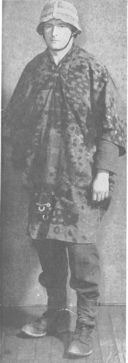
Figure 27.--The shelter quarter worn as a poncho. A Waffen-SS quarter is shown.
b. MODEL 34 HAVERSACK.
An older type of
haversack still being issued to some German soldiers is the Model 34. This is
similar to the Model 39, but is intended to carry all the soldier's equipment.
c. MOUNTAIN RUCKSACK
The duties and
equipment of mountain troops require a more versatile pack than the haversack.
The mountain rucksack is a large olive-drab sack with attached shoulder straps.
There is a large pocket on the outside below the cover flap. Leather loops
facilitate attaching articles to the outside. The rucksack rests lower on the
back than the haversack.
d. Luftwaffe RUCKSACK.
The design of the
Luftwaffe rucksack is similar, though not identical,
to that of the mountain rucksack. The chief difference is in color: the Air
Force rucksack is blue-gray.
e. TROPICAL RUCKSACK.
The tropical rucksack is simpler than the mountain and Luftwaffe
rucksack. Hooks at the corners snap into rings on the cartridge belt suspenders.
f. ARTILLERY RUCKSACK.
Artillerymen receive the artillery rucksack, consisting of a full marching pack
and a combat pack.
g. SADDLEBAGS.
Until July 1944 a
pair of saddlebags was issued to each mounted soldier, but since then saddlebags
are considered organizational equipment. It is probable that the supplies of the
old Model 34 now are nearly exhausted. It is being replaced by large and small
saddlebags. The large saddlebag is the "horse" pack. Its contents include mess
kit, horseshoe, eight nails, four calks, calk fastener and hoof cleaner,
surcingle, curry comb, horse brush, and pail. The small saddlebag, carried on
the right just behind the rider, carries the soldier's personal
[IX-24]
equipment. Sweater, iron rations,
rifle-cleaning kit, toilet articles, tent rope, shoe-cleaning gear, and towel
are carried inside the bag, while the shelter quarter is strapped to the
outside. Fifteen rounds of ammunition are carried on the cover flap. This small
saddlebag may be used as a combat pack if the rider must dismount. The hooks on
the four corners snap into the rings of the cavalry cartridge-belt suspenders.
The mess kit is removed from the large saddlebag and strapped to the outside of
the small saddlebag when it is used as a combat pack.
h. ENGINEER ASSAULT PACK.
One engineer
assault pack is authorized for every five combat engineers. It is used with the
infantry cartridge-belt suspenders and consists of a canvas pack worn on the
back and two canvas pouches used in place of the regular cartridge pouches. Two
smoke pots are carried in the top of the pack and a 3-kilogram boxed demolition
charge in the bottom. In addition, the mess kit, which fits in a special pocket,
and shelter quarter are carried in the pack. The pouches hold egg-shaped
grenades with rifle ammunition in side pockets. There is a special pocket on the
right pouch for a gas mask without carrier. The men to whom this assault pack is
issued also receive Model 39 haversack.
4. Special Mountain Equipment
Special equipment
issued to German mountain troops is very similar to civilian mountaineering
equipment. Manila rope about 1/2 inch in diameter is issued in 100-foot lengths
for mountain climbing, but it, of course, serves many other purposes. The
equipment of German mountain troops also includes ice axes, 10-point crampons
which are strapped to boots for better traction on ice, pitons, snaplinks,
steel-edged mountain skis with Kandahar type bindings, and small oval snowshoes.
Small, light-weight, A-shaped tents are issued to mountain troops. Red avalanche
cords, avalanche shovels, and avalanche probes are provided for rescue work.
5. Special Winter Equipment
Ski troops in
flat country are issued lighter skis than those given mountain troops. Their
skis are not steel-edged and have a special binding designed for cross-country
travel. This binding clamps securely to a metal plate screwed to the bottom of a
special wooden-soled canvas over-boot. Since all the plates are the same size, the

Figure 28.--A Waffen-SS mountain sergeant teaches
the use of ice ax and crampons
while simulating the descent of an ice slope. The crampons are
strapped to ski-mountain boots.
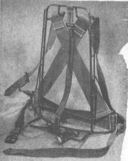
Figure 29.--German pack frames for heavy weapons specially designed
for the loads they are intended to carry.
[IX-25]
binding fits all men, making the skis
interchangeable. Small sleds, known as akajas and looking like small 7-foot,
flat-bottomed canoes, are used to transport supplies and heavy weapons and
evacuate wounded across snow. There are three types: the double-end boat akaja,
the weapons akaja, and the plywood akaja. Also, other types of sleds are improvised.
6. Miscellaneous Equipment
a. DISPATCH CASE.
Platoon and squad
leaders, master sergeants, messenger carriers, and similar personnel wear a
black leather dispatch case on their belts. Previously this case was issued to a
greater number, but in 1943 the issue was restricted to conserve leather. A
leather map case with a plastic window fits inside the dispatch case. Several
pockets are sewn on the front of the case to accommodate seven pencils, rules,
map-reading instruments, and other equipment.
b. PACK FRAMES.
Pack frames,
which are used by German troops to carry heavy weapons and other heavy or clumsy
loads, particularly in difficult terrain, are somewhat similar in appearance to
the metal tube frames sometimes used with frame rucksacks. There is no universal
type but rather special ones for each type of load with special tubes and
shelves to accommodate the particular type of equipment carried.
c. GOGGLES.
The commonest
German goggles are the plastic-lens folding type, made with both clear and amber
lenses, one of each type frequently being issued to each man. These are the "sun
and dust goggles" which are issued to all members of motorized or mechanized
units except vehicle drivers and motorcyclists, who receive a heavier model with
smoke-colored lenses and leather, synthetic rubber, or felt frames.
The heavier goggles are also issued to some antiaircraft gunners and sometimes to mountain
troops, although mountain troops frequently get the plastic goggles.
d. FORK-SPOON.
A combination aluminum fork-spoon is issued to each German soldier. The handles of the fork
and spoon are riveted together so that when extended the fork is on one end and
the spoon on the other, but when folded the handles lie together and the tines
of the fork rest in the bowl of the spoon. Since the over-all length folded is
only 51/2 inches, this combination utensil
is easily carried. It is much simpler
and lighter than a combination strainless steel knife, fork, spoon, and
sometimes can-opener issued to German troops during the African campaign.

Figure 30.--Fuel tablet stove (Esbit Kocher) in half-open position.
When closed, the box of Esbit fuel tablets fits inside and is fully protected against breakage.
e. RATION HEATERS.
A small gasoline
stove, weighing a little over a pound, is issued to special units such as
mountain troops who must operate under difficult conditions but keep a high
degree of mobility. This stove works by burning vaporized gasoline, but it has
no pressure pump. Pressure is built up by heating the burner with gasoline or
fuel tablets burnt in a small cup below the tank and maintained by the heat
generated by the stove itself. More widely issued are fuel tablets, the
commonest of which is Esbit: tablets of
hexamethylehe tetramine. The fuel is packed in a paper carton which is carried
in the fuel-tablet stove (Esbit Kocher). In the
carton there are four cakes of five tablets each, one or more of which may be
broken from the cake and and burned at a time. This fuel is extremely efficient.
The fuel-tablet stove is made of three sections of zinc-coated steel. Two
identical sections, which form the cover in the closed position, and the sides
and mess kit support in the two open positions, are attached to a third section,
by a grommet hinge. This third section is a shallow pan on which the tablets are
burned. Dimples in the metal at appropriate positions hold the stove in either
the closed, half-open, or open positions.
[IX-26]
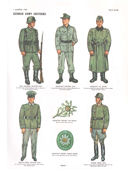 |
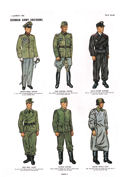 |
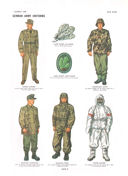 |
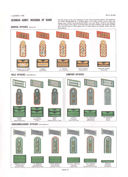 |
| Plate I: German Army Uniforms |
Plate II: German Army Uniforms |
Plate III: German Army Uniforms |
Plate IV: German Army: Insignia of Rank(Officer/NCO) |
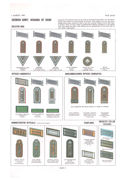 |
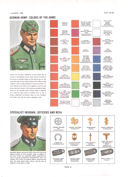 |
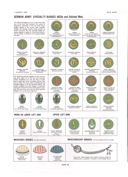 |
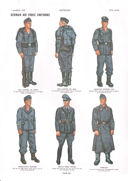 |
| Plate V: German Army: Insignia of Rank (Enlisted Men) |
Plate VI: German Army: Colors of the Arms Specialist Insignia: (Officers and NCOs) |
Plate VII: German Army: Speciality Badges (NCOs and Enlisted Men) |
Plate VIII: German Air Force Uniforms |
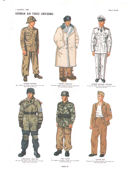 |
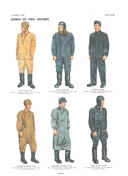 |
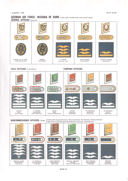 |
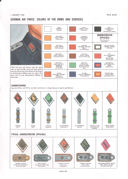 |
| Plate IX: German Air Force Uniforms |
Plate X: German Air Force Uniforms |
Plate XI: German Air Force: Insignia of Rank (General Officers) |
Plate XII: German Air Force: Colors of the Arm and Services |
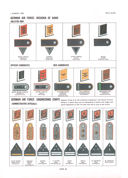 |
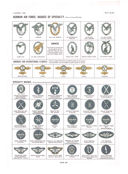 |
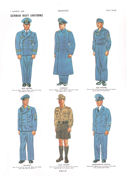 |
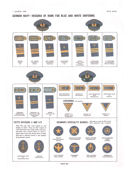 |
| Plate XIII: German Air Force: Insignia of Rank |
Plate XIV: German Air Force: Badges of Specialty |
Plate XV: German Navy Uniforms |
Plate XVI: German Navy: Insignia of Rank for Blue and White Uniforms |
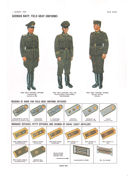 |
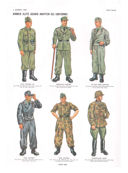 |
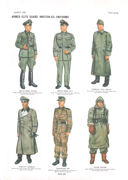 |
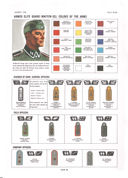 |
| Plate XVII: German Navy: Field Gray Uniforms |
Plate XVIII: Amed Elite Guard (Waffen-SS) Uniforms |
Plate XIX: Amed Elite Guard (Waffen-SS) Uniforms |
Plate XX: Amed Elite Guard (Waffen-SS): Colors of the Arms |
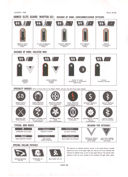 |
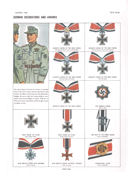 |
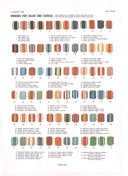 |
 |
| Plate XXI: Amed Elite Guard (Waffen-SS): Insignia of Rank (NCOs) |
Plate XXII: German Decorations and Awards |
Plate XXIII: German Decoration sand Awards |
Plate XXIV: Ribbons for Valor and Service |
[IX-78]
Table of Contents
Previous Chapter (8)
Next Chapter (10)





















































